
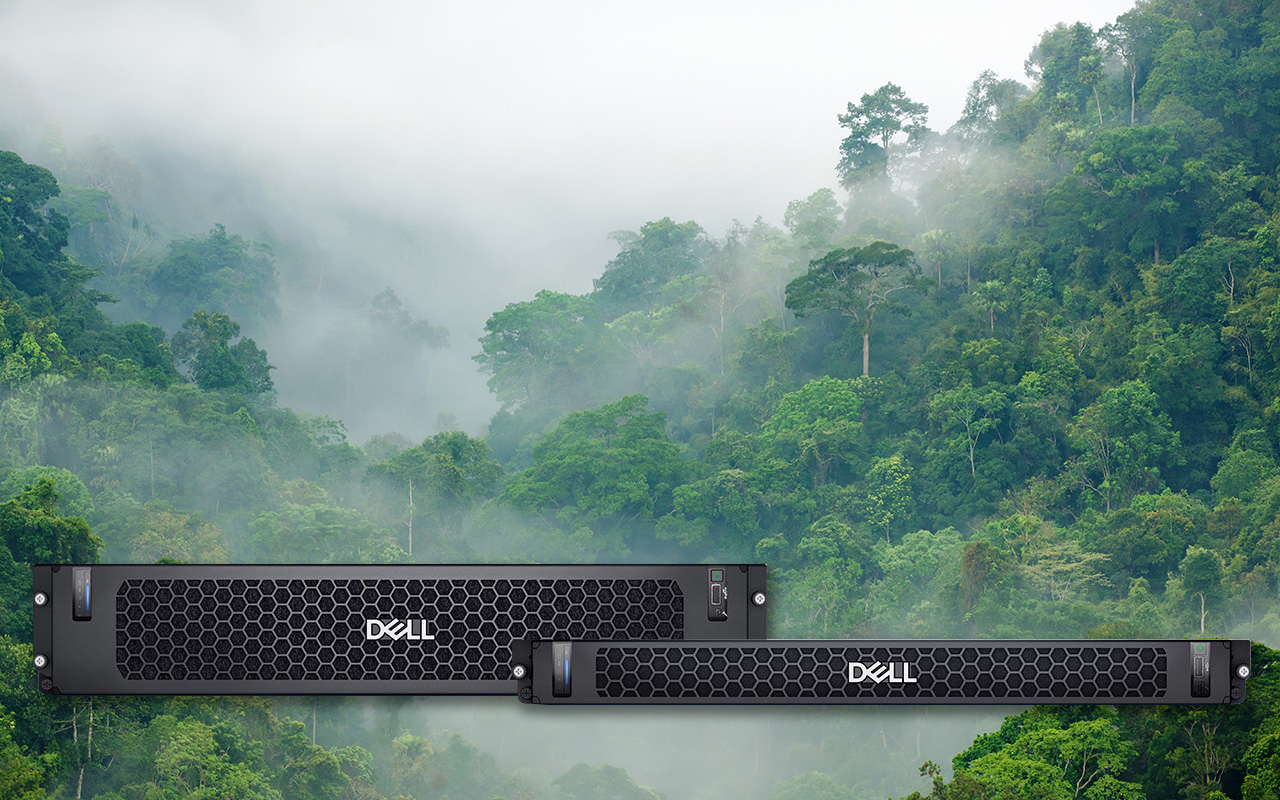
Dell’s PowerEdge XR5610 for Telecom/Edge Compute
Tue, 25 Apr 2023 16:58:19 -0000
|Read Time: 0 minutes
In June 2021, Dell announced the PowerEdge XR11 Server. This was Dell’s first design created for the requirements of Telecom Edge Environments. A 1U, short-depth, ruggedized, NEBS Level 3 compliant server, the XR11 has been successfully deployed in multiple O-RAN compliant commercial networks, including DISH Networks and Vodafone.
Dell has followed on the success of the XR11, with a generational improvement in the introduction of the PowerEdge XR5610.
Like its predecessor, the XR5610 is a short-depth ruggedized, single socket, 1U monolithic server, purpose-built for the Edge and Telecom workloads. Its rugged design also accommodates military and defense deployments, retail AI including video monitoring, IoT device aggregation, and PoS analytics.
 Figure 1. PowerEdge XR5610 1U Server
Figure 1. PowerEdge XR5610 1U Server
Improvements to the XR5610 include:
- A CPU upgrade to the recently announced 4th Generation Xeon Scalable processor, up to 32c,
- Support for the new Intel vRAN Boost variant, which will embed a vRAN accelerator in the CPU.
- A doubling of the memory bandwidth with the upgrade from DDR4 to DDR5.
- Higher performance I/O capabilities with the upgrade from PCIe Gen 4 to Gen 5.
- Dry inputs, common in remote environments to gain some insights into edge enclosure conditions, such as door open alarms, moisture detection, and more.
- Support for multiple accelerators, such as GPUs, O-RAN L1 Accelerators, and storage options including SAS, SATA or NVMe,
Topics where the XR5610 delivers at the Edge are:
- Form factor and deployability
- Environment and rugged design
- Efficient power options
Form factor and deployability
The monolithic chassis design of the XR5610 is a traditional, short depth form factor and fills certain deployment cases more efficiently than the XR8000. This form factor will often be preferred where limited or single server edge deployments are required, or if this is a planned long-term installation with limited or planned upgrades.
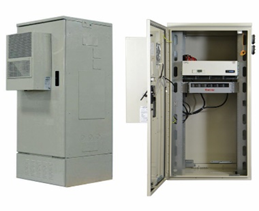 Figure 2. Site support cabinetThe XR5610 is compatible with much of today’s Edge infrastructure. These servers are designed with a short depth, “400mm Class” form factor, compatible with most existing Telecom Site Support Cabinets with flexible Power Supply options and dynamic power management to efficiently use limited resources at the edge.
Figure 2. Site support cabinetThe XR5610 is compatible with much of today’s Edge infrastructure. These servers are designed with a short depth, “400mm Class” form factor, compatible with most existing Telecom Site Support Cabinets with flexible Power Supply options and dynamic power management to efficiently use limited resources at the edge.
This 400mm Class server fits well within the commonly deployed edge enclosure depths of 600mm. With front maintenance capabilities, the XR5610 can be installed in Edge Cloud racks, and provide sufficient front clearance for power and network cabling, without creating a difficult-to-maintain cabling design or potentially one that obstructs airflow.
Environment and rugged design
While the XR5610 is designed to meet the environmental requirements of NEBS Level 3 and GR-3108 Class 1 for deploying into the Telecom Edge, Dell also wanted to create a platform that had uses and applications outside the Telecom Sector, beyond mee The PowerEdge XR5610 is also designed as a ruggedized compute platform for both military and maritime environments. The XR5610 is tested to MIL-STD and Maritime specifications, including shock, vibration, altitude, sand, and dust. This wider vision for the deployment potential of the XR5610 creates a computing platform that can exist comfortably in an O-RAN Edge Cloud environment, without being restricted to Telecom-only.
A smart filtered bezel option is also available so the XR5610 can work in dusty environments and send an alert when a filter should be replaced. This saves maintenance costs because technicians can be called out on an as-needed basis, and customers don’t have to be concerned with over-temperature alarms caused by prematurely clogged filters.
Efficient power options
The XR5610 supports 2 PSU slots that can accommodate multiple power capacities, in both 120/240 VAC and -48 VDC input powers.
Dell has worked with our power supply vendors to create an efficient range of Power Supply Units (PSUs), from 800W to 1800W. This allows the customer to select a PSU that most closely matches the current version available at the facility and power draw of the server, reducing wasted power loss in the voltage conversion process.
Conclusion
The Dell PowerEdge XR servers, in particular the XR5610 and XR8000, are providing a new Infrastructure Hardware Foundation that allows Wireless Operators to transition away from traditional, purpose-built, classical BBU appliances, decoupling HW and SW to an open, virtualized RAN that gives operators the choice to create innovative, best-in-class solutions from a multi-vendor ecosystem.
Related Blog Posts

Dell Shifts vRAN into High Gear on PowerEdge with Intel vRAN Boost
Thu, 17 Aug 2023 18:33:05 -0000
|Read Time: 0 minutes
What has past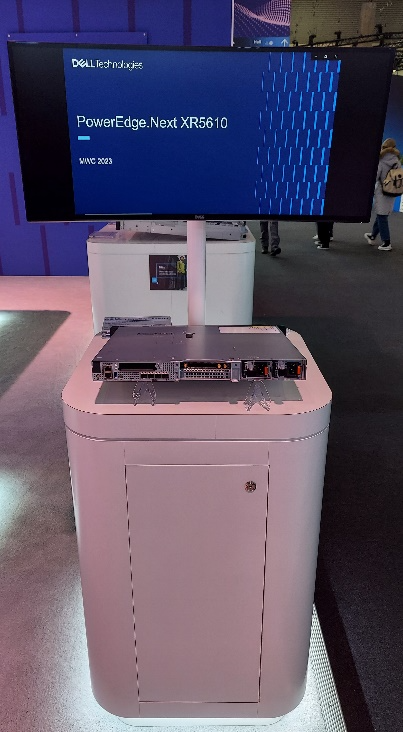
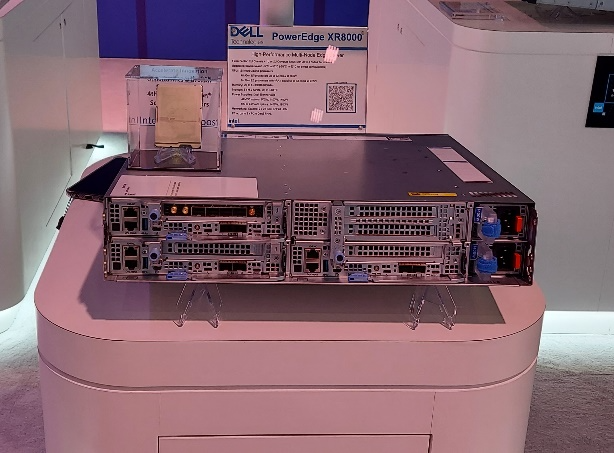
Mobile World Congress 2023 was an important event for both Dell Technologies and Intel that marked a true foundational turning point for vRAN viability. At this event, Intel launched its 4th Gen Intel Xeon Scalable processor, with Intel vRAN Boost, and Dell announced two new ruggedized server platforms, the PowerEdge XR5610 and XR8000, with support for vRAN Boost CPU SKUs.
The features and capabilities of the PowerEdge XR5610 and XR8000 have been highlighted in previous blogs and both have been available to order since May 2023. These new ruggedized servers have been evaluated and adopted as Cloud RAN reference platforms by NEPs such as Samsung and Ericsson. Short-depth, NEBS certified and TCO-optimized, these servers are purpose-built for the demanding deployment environments of Mobile Operators and are now married to the Intel vRAN Boost processor to provide a powerful and efficient alternative to classical appliance options.
What is now
Starting August 16, 2023, the 4th Gen Intel Xeon Scalable processor with Intel vRAN Boost is available to order with the PowerEdge XR5610 and XR8000. These two critical pieces of the vRAN puzzle have been brought together and are now available to order from our PowerEdge XR Rugged Servers page with the following CPU SKUs.
| CPU SKU | Cores | Base Freq. | TDP |
|---|---|---|---|
6433 N | 32 | 2.0 | 205 W |
5423 N | 20 | 2.1 | 145 W |
6423 N | 28 | 2.0 | 195 W |
6403 N | 24 | 1.9 | 185 W |
Table 1. Intel vRAN Boost SKUs available today from Dell
Additional details on these new CPU SKUs and all 4th Gen Intel® Xeon® Scalable processors can be found on the Intel Ark Site.
These processors, with Intel vRAN Boost, integrate key acceleration blocks for 4G and 5G Radio Layer 1 processing into the CPU. These include:
- 5G Low Density Parity Check (LDPC) encoder/decoder
- 4G Turbo encoder/decoder
- Rate match/dematch
- Hybrid Automatic Repeat
- Request (HARQ) with access to DDR memory for buffer management
- Fast Fourier Transform (FFT) block providing DFT/iDFT for the 5G Sounding Reference Signal (SRS)
- Queue Manager (QMGR)
- DMA subsystem
One of the most interesting features of the vRAN Boost CPU is how this acceleration block is accessed by software. Although it is integrated on-chip with the CPU, the vRAN Boost block still presents itself to the Cores/OS as a PCIe device. The genius of this approach is in software compatibility. Virtual Distributed Unit (vDU) applications written for the previous generation HW will access the new vRAN Boost block using the same standardized, open APIs that were developed for the previous generation product. This creates a platform that can support past, present (and possibly future) generations of Intel’s vRAN optimized HW with the same software image.
What is to come
Prior to vRAN Boost, the reference architecture for vDU was a 3rd Gen Intel Xeon Scalable processor along with a FEC/LDPC accelerator, such as the Intel vRAN Accelerator ACC100 Adapter, and most today’s vRAN deployments can be found with this configuration. While the ACC100 does meet the L1 acceleration needs of vRAN it does this at a price, in terms of the space of an HHHL PCIe card and at the cost of an additional 54 W of power consumed (and cooled). In addition, using a PCIe interface will further reduce additional I/O expansion options and impact the ability to scale in-chassis due to slot count – both of which are alleviated with vRAN Boost.
With the new Intel vRAN Boost processors’ fully integrated acceleration, Intel has taken a huge step in closing the performance gap with purpose-built hardware, while remaining true to the “Open” in O-RAN.
Intel says that, compared to the previous generation, the new Intel vRAN Boost processor delivers up to 2x capacity and ~ 20% compute power savings compared to its previous generation processor with ACC100 external acceleration. At the Cell Site, where every watt is counted, operators are constantly exploring opportunities to reduce both power consumption and the associated “cooling tax” of keeping the HW in its operational range, typically within a sealed environment.
Dell and Intel have worked together to provide early access Intel vRAN Boost provisioned XR5610s and XR8000s to multiple partners and customers for integration, evaluation, and proof-of-concepts. One early evaluator, Deutsche Telekom, states:
“Deutsche Telekom recently conducted a performance evaluation of Dell’s PowerEdge XR5610 server, based on Intel’s 4th Gen Intel Xeon Scalable processor with Intel vRAN Boost. Testing under selected scenarios concluded a 2x capacity gain, using approximately 20% less power versus the previous generation. We aim to leverage these significant performance gains on our journey to vRAN.”
-- Petr Ledl , Vice President of Network Trials and Integration Lab and Access Disaggregation Chief Architect, Deutsche Telekom AG
With such a solid industry foundation of the telecom-optimized PowerEdge XR5610s/XR8000s, and 4th Gen Intel Xeon Scalable processors with Intel vRAN Boost, expect to see accelerated deployments of open, vRAN-based infrastructure solutions.
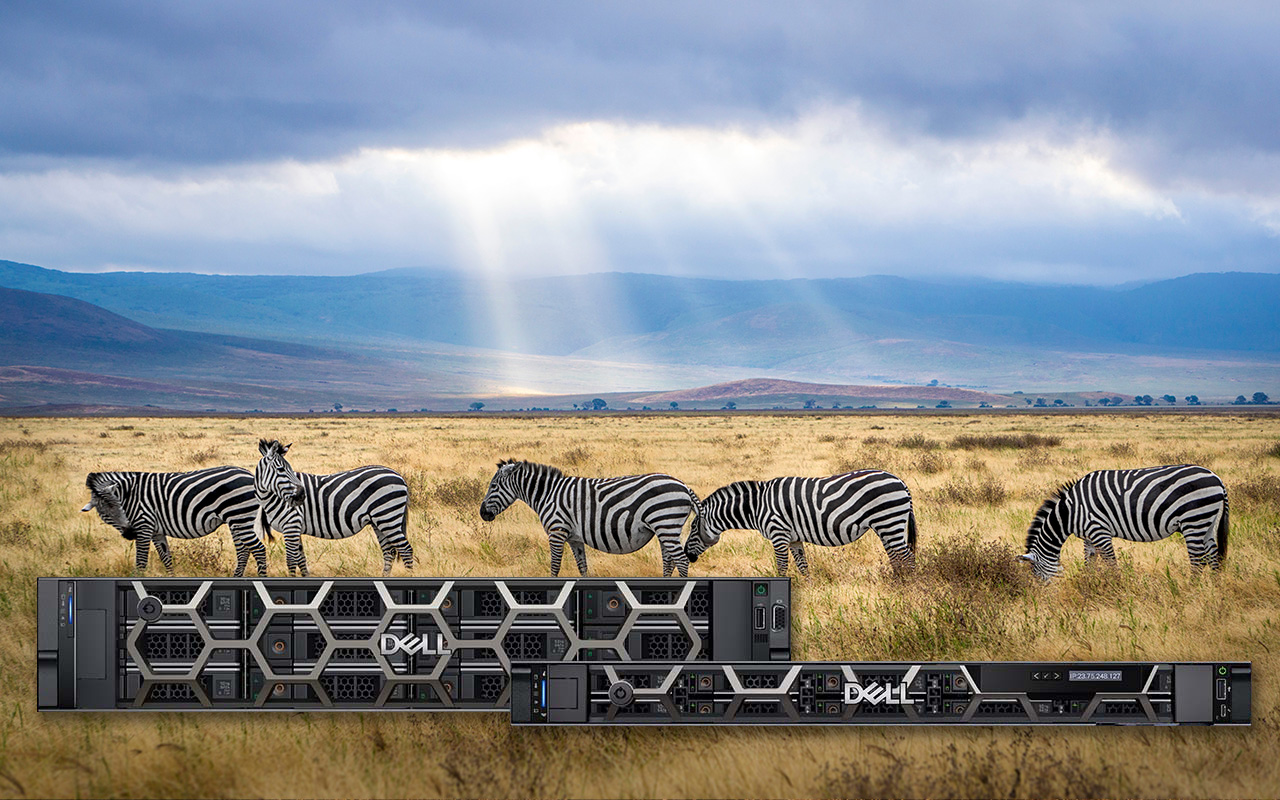
Dell’s PowerEdge XR4000 for Telecom/Edge Compute
Wed, 08 Feb 2023 18:04:19 -0000
|Read Time: 0 minutes
Compute capabilities are increasingly migrating away from the centralized data center and deployed closer to the end user—where data is created, processed, and analyzed in order to generate rapids insights and new value.
Dell Technologies is committed to building infrastructure that can withstand unpredictable and challenging deployment environments. In October 2022, Dell announced the PowerEdge XR4000, a high-performance server, based on the Intel® Xeon® D Processor that is designed and optimized for edge use cases.

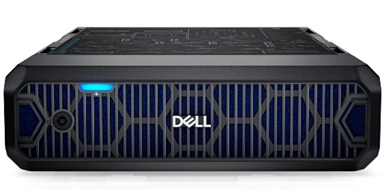

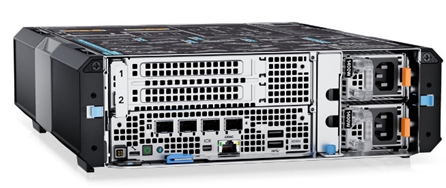
Figure 1. Dell PowerEdge XR4000 “rackable” (left) and “stackable” (right) Edge Optimized Servers
The PowerEdge XR4000 is designed from the ground up with the specifications to withstand rugged and harsh deployment environments for multiple industry verticals. This includes a server/chassis designed with the foundation requirements of GR-63-CORE (including -5C to +55C operations) and GR1089-CORE for NEBS Level 3 and GR-3108 Class 1 certification. Designed beyond the NEBS requirements of Telecom, the XR4000 also meets MIL-STD specifications for defense applications, marine specifications for shipboard deployments, and environmental requirements for installations in the power industry.
The XR4000 marks a continuation of Dell Technologies’ commitment to creating platforms that can withstand the unpredictable and often challenging deployment environments encountered at the edge, as focused compute capabilities are increasingly migrating away from the Centralized Data Center and deployed closer to the End User, at the Network Edge or OnPrem.
Attention to a wide range of deployment environments creates a platform that can be reliably deployed from the Data Center to the Cell Site, to the Desktop, and anywhere in between. Its rugged design makes the XR4000 an attractive option to deploy at the Industrial Edge, on the Manufacturing Floor, with the power and expandability to support a wide range of computing requirements, including AI/Analytics with bleeding-edge GPU-based acceleration.
The XR4000 is also an extremely short depth platform, measuring only 342.5mm (13.48 inches) in depth which makes it extremely deployable into a variety of locations. And with a focus on deployments, the XR4000 supports not only EIA-310 compatible 19” rack mounting rails, but also the “stackable” version supports common, industry-standard VESA/DIN rail mounts, with built-in latches to allow the chassis to be mounted on top of each other, leveraging a single VESA/DIN mount.
Additionally, both Chassis types have the option to include a lockable intelligent filtered bezel, to prevent unwanted access to the Sleds and PSUs, with filter monitoring which will create a system alert when the filter needs to be changed. Blocking airborne contaminants, as discussed in a previous blog, is key to extending the life of a server by reducing contaminant build-up that can lead to reduced cooling performance, greater energy costs, corrosion and outage-inducing shorts.
The modular design of the XR4000, along with the short-depth Compute Sled design creates an easily scalable solution. Maintenance procedures are simplified with an all-front-facing, sled-based design.
Conclusion
Specifying and deploying Edge Compute can very often involve selecting a Server Solution outside of the more traditional data center choices. The XR4000 addresses the challenges of moving to compute to the Edge with a compact, NEBS-compliant, and ruggedized approach, with Sled-based servers and all front access, reversible airflow and flexible mounting options, to provide ease of maintenance and upgrades, reducing server downtime and improving TCO.


